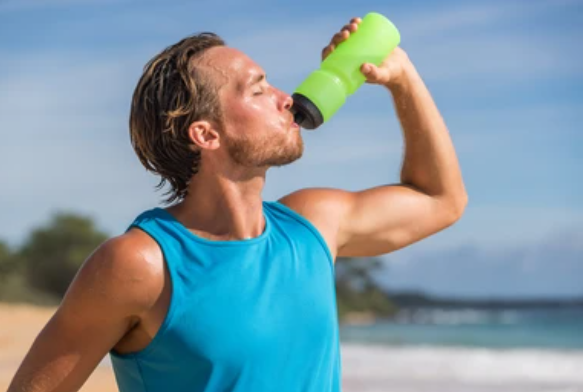As the temperature rises, so does our enthusiasm for outdoor
workouts. With summers staying hotter for longer, how can you continue to
exercise, even when it is hot?
If you are pushing yourself to exercise too hard when it is
too hot, you do not just ruin your workout, you risk jeopardising your health.
Exertional Heat Illness, or EHI, is the term used for
conditions that include heatstroke, heat exhaustion, heat syncope (fainting),
and heat cramps.
It is vital to listen to your body and be attuned to
symptoms of EHI. These include headache, dizziness, nausea, fatigue, and
light-headedness. If you start to become disoriented, or you blackout or faint,
it is serious and you need to get immediate medical attention.
This does not mean you cannot still exercise outdoors in
summer. You just have to follow some more considered strategies.
Strategy 1: Timing is everything
In summer, the timing of your workouts is just as important
as the length and intensity.
Dr Michael Bergeron is a sports medicine researcher and is
globally recognised for his research on exercise-heat stress. He consults to
international tennis, basketball, soccer, hockey, and martial arts
associations.
Dr Bergeron recommends steering clear of the sun’s peak
hours between 10am and 4pm, when temperatures are at their highest. Instead, he
suggests scheduling outdoor activities during the cooler periods of the day,
such as early mornings or late evenings. It minimises your risk of overheating
and maximises your performances – and your enjoyment.
When you exercise in the cooler part of the day, your body
expends less energy trying to cool itself down, resulting in improved endurance
and reduced risk of heat-related issues.
Strategy 2: Buddy up
Exercising with a friend is good for your motivation anyway,
but in summer, it is good for your health too.
Dr Bergeron advises having a buddy with you when you
exercise in the heat, in case anything goes wrong. Heat stress can creep up on
you, and it can help to have someone else telling you to slow down or take a
break.
Strategy 3: Drink water, the right way

Do not wait until you are thirsty before you drink. Thirst
is a sign that you are already dehydrated.
How much to drink depends on the heat, the intensity of your
exercise and your weight.
In advice for competitive tennis players, Dr Bergeron says
you can lose between one and two and a half litres of water during each hour of
competitive singles. Some players can lose up to 3.5 litres per hour. And
although women generally sweat less than men, this is not always the case.
The key, according to Dr Bergeron, is to drink enough water
before, during and after exercise.
- Before your workout, make sure
you are well hydrated and avoid caffeine.
- During exercise, drink enough to
feel comfortably full, even if you are not thirsty. If you are exercising for
an hour or less, water is fine. Much longer and you might need a
carbohydrate-electrolyte drink that includes sodium.
- Afterwards, you need to replace
lost fluid, electrolytes and carbohydrates.